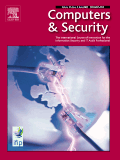
COMPUTERS & SECURITY
Scope & Guideline
Advancing cybersecurity knowledge for a safer digital future.
Introduction
Aims and Scopes
- Cybersecurity Methodologies:
The journal extensively covers methodologies for assessing, detecting, and mitigating cybersecurity threats. This includes machine learning algorithms, deep learning architectures, and statistical models applied to intrusion detection systems, malware classification, and anomaly detection. - Human Factors in Cybersecurity:
Research on the human elements influencing cybersecurity practices is a key focus area. This includes studies on user behavior, awareness training, and psychological factors affecting compliance with security policies. - IoT and Cyber-Physical Systems Security:
With the rise of IoT devices, there is a significant emphasis on security frameworks tailored for IoT ecosystems and cyber-physical systems. This encompasses risk assessment, secure communication protocols, and threat modeling. - Privacy-Preserving Technologies:
The journal highlights innovations in privacy-preserving techniques, including differential privacy, secure multi-party computation, and methods to safeguard user data in cloud and edge computing environments. - Adversarial Machine Learning:
Research on adversarial attacks and defenses in machine learning models is prevalent. This includes exploration of vulnerabilities in AI systems and strategies to enhance robustness against such threats. - Compliance and Regulatory Frameworks:
The journal discusses frameworks related to compliance with cybersecurity regulations and standards, emphasizing the importance of governance in organizational cybersecurity practices.
Trending and Emerging
- Artificial Intelligence and Machine Learning in Security:
There is a growing emphasis on the application of AI and machine learning techniques for predictive analytics, threat detection, and response automation, showcasing the industry's shift towards leveraging intelligent systems for enhanced security. - Cybersecurity for Emerging Technologies:
Research focusing on the security implications of emerging technologies such as 5G, blockchain, and quantum computing is on the rise, highlighting the need for innovative security solutions tailored to these advanced systems. - Behavioral Cybersecurity:
The study of behavioral aspects in cybersecurity, including user training and the psychological factors that influence security compliance, is gaining traction, emphasizing the human element in security. - Privacy and Data Protection:
There is an increasing focus on privacy-centric research, particularly in the context of data protection regulations (like GDPR) and privacy-preserving technologies, reflecting a heightened awareness of user privacy in digital interactions. - Resilience and Incident Response:
The emphasis on resilience strategies and incident response frameworks is trending, with research exploring proactive measures and adaptive responses to evolving cyber threats.
Declining or Waning
- Traditional Antivirus Solutions:
Research focused on traditional antivirus software has waned as the field has shifted towards advanced detection methods like machine learning and behavioral analysis. This reflects a move away from signature-based detection towards more adaptive, intelligent solutions. - Static Security Assessments:
Static analysis methods for vulnerability detection are receiving less attention compared to dynamic and hybrid approaches. The growing complexity of software environments demands more flexible and real-time assessment strategies. - Network Perimeter Defense:
The focus on perimeter-based security models has declined, as organizations increasingly adopt zero-trust architectures that emphasize identity and access management over traditional network defenses. - Human-Centric Security Policies:
Although understanding user behavior remains important, the explicit focus on developing policies centered around user actions has decreased in favor of more technical, automated solutions that leverage AI and machine learning. - Legacy Systems Security:
Research addressing security for legacy systems is becoming less prominent as organizations prioritize modernization and the adoption of newer technologies, which are perceived as more secure.
Similar Journals

Cryptography, an esteemed journal published by MDPI, focuses on the rapidly evolving fields of cryptography and information security, providing a platform for researchers and practitioners to share their findings and advancements. Since its inception in 2017, it has embraced an Open Access model, allowing unrestricted access to high-quality research articles, thereby fostering collaboration and innovation among academics globally. Based in Switzerland, this journal aims to cover a broad spectrum, from theoretical foundations to practical applications, contributing significantly to fields such as Applied Mathematics and Computer Science. Its impressive rankings in reputable databases like Scopus reflect its relevance and quality, holding a Q2 category in multiple disciplines, including Computational Theory and Mathematics and Computer Networks and Communications. With the continuous rise in importance of cybersecurity and data protection, Cryptography serves as a vital resource for professionals, students, and researchers dedicated to advancing knowledge in these critical areas.

Journal of Computer Security
Advancing the frontiers of cybersecurity research.Welcome to the Journal of Computer Security, a premier publication dedicated to advancing the field of cybersecurity and digital safety. Published by IOS PRESS, this esteemed journal has been at the forefront of research since its inception, with a rich history spanning from 1992 to 2024. Based in the Netherlands, the journal aims to provide a reputable platform for researchers and professionals to disseminate innovative findings in various subfields, including computer networks, hardware architecture, and software engineering. With its current Q3 ranking across multiple categories and a focus on safety, risk, reliability, and quality, the journal plays a critical role in shaping contemporary discourse and fostering collaboration within the cybersecurity community. Though it is not an open-access journal, the Journal of Computer Security remains a vital resource for academics and practitioners alike, offering access to significant advancements and methodologies that guide the evolution of security practices worldwide. Engage with us and contribute to this dynamic field of study!
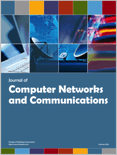
Journal of Computer Networks and Communications
Transforming Communication Through Rigorous ScholarshipThe Journal of Computer Networks and Communications is a premier open-access journal published by HINDAWI LTD, dedicated to advancing the field of computer networks and communications. With an ISSN of 2090-7141 and an E-ISSN of 2090-715X, this journal has been accessible to researchers since its inception in 2011, promoting widespread dissemination of knowledge in this rapidly evolving discipline. Based in Egypt, the journal's editorial standards are upheld through a rigorous peer-review process, contributing to its strong academic reputation. As of 2023, it holds a commendable Q2 ranking in Computer Networks and Communications and a Q3 ranking in Information Systems within its category quartiles. According to Scopus rankings, it occupies the 141st and 143rd positions in its respective fields, showcasing its relevance and influence in the academic community. The journal's mission is to publish high-quality research that addresses contemporary challenges in networking technologies and systems, making it an essential resource for researchers, professionals, and students seeking to innovate and excel in these fields.

ACM Transactions on Cyber-Physical Systems
Exploring New Frontiers in Cyber-Physical SystemsACM Transactions on Cyber-Physical Systems, published by the Association for Computing Machinery, is a premier journal dedicated to the interdisciplinary fields of cyber-physical systems (CPS), which bridge the gap between computational algorithms and physical processes. Established in 2017, this journal has rapidly gained recognition with an impressive categorization in top-tier quartiles, achieving Q1 in Control and Optimization and Q2 in several other significant areas including Artificial Intelligence and Computer Networks. Its Scopus rankings further enhance its credibility, demonstrating a strong impact in multiple domains of computer science. While this journal is not Open Access, it remains a vital resource for researchers and practitioners looking to stay at the forefront of credible research and innovation within the rapidly-evolving realm of CPS. The journal's objective is to foster knowledge exchange and promote advancements in technology, aiming to address both theoretical and practical challenges in the integration of computing and physical systems. By featuring high-quality, peer-reviewed articles, the ACM Transactions on Cyber-Physical Systems continues to shape the future of technology and invites contributions from scholars eager to push boundaries in this dynamic field.
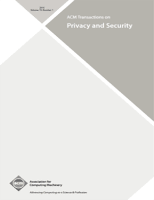
ACM Transactions on Privacy and Security
Empowering Innovations in Privacy and Security.ACM Transactions on Privacy and Security, published by the Association for Computing Machinery, is a prestigious journal dedicated to the field of computer science, with a particular focus on privacy and security in modern computing environments. Since its inception in 2016, this journal has become a vital resource for researchers, professionals, and students alike, addressing the increasing concerns surrounding data protection and risk management. With an impressive impact factor and recognition as a Q1 journal in both Computer Science (Miscellaneous) and Safety, Risk, Reliability and Quality, it ranks among the top publications in its field, positioned at the 73rd percentile in General Computer Science and the 71st percentile in Engineering. The journal’s Open Access options enhance accessibility to cutting-edge research, fostering collaboration and innovation in the rapidly evolving landscape of privacy and security. Readers can expect high-quality peer-reviewed articles that contribute significantly to both theoretical and practical advancements in technology and data security.

Malaysian Journal of Computer Science
Exploring New Horizons in Computer Science Research.Malaysian Journal of Computer Science is a prominent academic journal dedicated to advancing the field of computer science, published by the esteemed University of Malaya, Faculty of Computer Science & Information Technology. With historical coverage spanning from 1996 to 2024, this journal plays a vital role in disseminating innovative research and developments in various areas of computer science. Recognized with a 2023 Scopus rank in the top half of its category, ranked #137 out of 232, it holds a Q3 quartile position in the field of General Computer Science. The journal serves as a platform for researchers, professionals, and students to share groundbreaking findings and foster collaboration within the community. While currently not offering open access, its commitment to quality and academic integrity remains unwavering, making it an essential source for anyone interested in the latest advancements in informatics and technology.
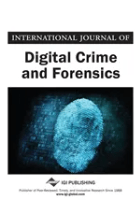
International Journal of Digital Crime and Forensics
Advancing the Frontiers of Cybersecurity and ForensicsWelcome to the International Journal of Digital Crime and Forensics, an esteemed publication spearheaded by IGI Global, dedicated to advancing research and disseminating knowledge in the crucial fields of cybersecurity, digital crime, and forensic analysis. With its inaugural issue published in 2009, this journal has continually focused on providing a platform for innovative research, insightful case studies, and practical solutions aimed at addressing contemporary challenges in digital criminal activity and forensic investigation. While currently classified in the Q4 Category for software within the Computer Science domain according to 2023 rankings, and positioned in the 32nd percentile of Scopus Ranks, the journal remains committed to enhancing its impact and visibility in the scholarly community. By maintaining a rigorous peer-review process, the journal ensures high-quality contributions that equip researchers, professionals, and students with essential tools and knowledge. Although the journal operates under a subscription model, it plays an integral role in shaping the discourse surrounding digital crime and forensics, making it an indispensable resource for anyone serious about understanding and combating digital threats.

Telecom is an esteemed peer-reviewed journal published by MDPI, specializing in the fields of computer networks and communications as well as electrical and electronic engineering. Since its inception in 2020, this Open Access journal has provided a platform for innovative research and advancements in telecommunication technologies, making significant contributions to both academia and industry. With an impressive impact factor and a category rank of Q2 in the 2023 Scopus rankings, Telecom continues to be a valuable resource for researchers, professionals, and students seeking to engage with cutting-edge developments in telecommunication. The journal invites high-quality manuscripts that explore emerging trends, challenges, and solutions in the ever-evolving telecom landscape. Situated in Basel, Switzerland, Telecom is committed to fostering a global exchange of knowledge and serves as an essential conduit for advancing the discourse in telecommunications.
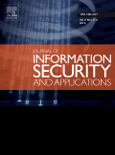
Journal of Information Security and Applications
Empowering Innovations in Security ApplicationsJournal of Information Security and Applications, published by ELSEVIER, is a premier outlet for cutting-edge research in the field of information security and applications. With a dedicated ISSN of 2214-2126 and an E-ISSN of 2214-2134, this journal ranks impressively in the top quartile (Q1) across multiple categories as of 2023, including Computer Networks and Communications, Safety, Risk, Reliability and Quality, and Software. The journal’s notable Scopus rankings further reflect its impact, holding positions within the top 15% in several engineering and computer science areas. Spanning a converged period from 2013 to 2024, the journal aims to disseminate high-quality research findings, facilitating a vibrant platform for scholars, practitioners, and students to engage with contemporary challenges in information security. Although not an open-access journal, the knowledge shared within its pages is indispensable for those dedicated to advancing the technological and theoretical underpinnings of security measures in various applications.

Annals of Telecommunications
Unveiling the latest trends in telecommunications engineering.Annals of Telecommunications is a prestigious peer-reviewed journal published by SPRINGER INT PUBL AG, dedicated to advancing the field of electrical and electronic engineering. Established in 1946, this journal presents a comprehensive collection of research articles that address the latest trends and developments in telecommunications, including innovative technologies, systems, and applications. With an impressive Q2 ranking in the 2023 category of Electrical and Electronic Engineering and a Scopus rank in the 68th percentile, the journal serves as a vital platform for researchers, professionals, and students looking to disseminate groundbreaking findings and engage with contemporary challenges in the field. Although it is not an Open Access journal, it offers a wealth of knowledge that contributes to both academic and practical advancements in telecommunications. The Annals of Telecommunications remains an essential resource for anyone involved in telecommunication research and practice, fostering collaboration and knowledge exchange globally.